For the 2025 school year, there is 1 public middle school serving 383 students in Western Wayne School District. This district's average middle testing ranking is 6/10, which is in the top 50% of public middle schools in Pennsylvania.
Public Middle School in Western Wayne School District have an average math proficiency score of 23% (versus the Pennsylvania public middle school average of 26%), and reading proficiency score of 63% (versus the 52% statewide average).
Minority enrollment is 16% of the student body (majority Hispanic), which is less than the Pennsylvania public middle school average of 46% (majority Black and Hispanic).
Overview
This School District
This State (PA)
# Schools
4 Schools
923 Schools
# Students
1,794 Students
591,579 Students
# Teachers
151 Teachers
44,337 Teachers
Student : Teacher Ratio
12:1
12:1
District Rank
Western Wayne School District, which is ranked within the top 50% of all 675 school districts in Pennsylvania (based off of combined math and reading proficiency testing data) for the 2021-2022 school year.
The school district's graduation rate of 90-94% has decreased from 95% over five school years.
Overall District Rank
#219 out of 684 school districts
(Top 50%)
(Top 50%)
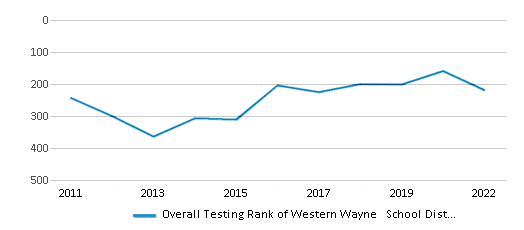
Math Test Scores (% Proficient)
37%
36%
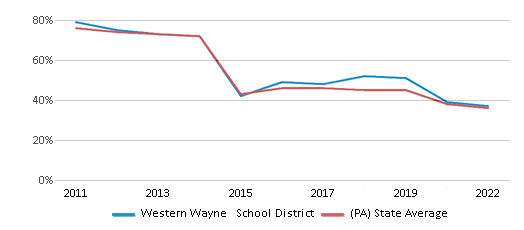
Reading/Language Arts Test Scores (% Proficient)
64%
55%

Science Test Scores (% Proficient)
60%
57%
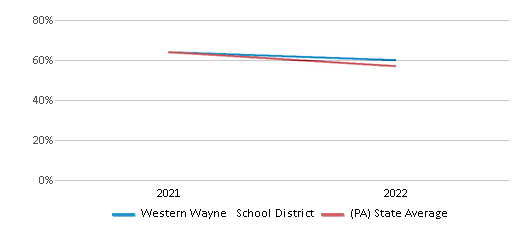
Graduation Rate
90-94%
87%
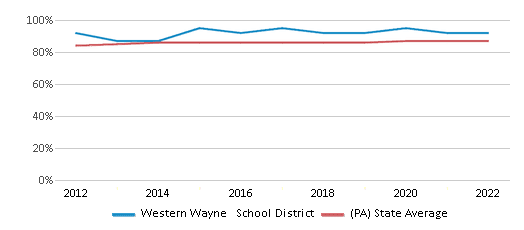
Students by Ethnicity:
Diversity Score
0.29
0.65
# American Indian Students
n/a
1,239 Students
% American Indian Students
n/a
n/a
# Asian Students
4 Students
25,214 Students
% Asian Students
n/a
4%
# Hispanic Students
178 Students
97,970 Students
% Hispanic Students
10%
17%
# Black Students
24 Students
118,593 Students
% Black Students
1%
20%
# White Students
1,502 Students
316,870 Students
% White Students
84%
54%
# Hawaiian Students
n/a
586 Students
% Hawaiian Students
n/a
n/a
# Two or more races Students
86 Students
30,545 Students
% of Two or more races Students
5%
5%
Students by Grade:
# Students in PK Grade:
112
1,623
# Students in K Grade:
110
15,933
# Students in 1st Grade:
126
17,465
# Students in 2nd Grade:
136
18,204
# Students in 3rd Grade:
127
18,156
# Students in 4th Grade:
136
19,235
# Students in 5th Grade:
123
33,809
# Students in 6th Grade:
118
92,720
# Students in 7th Grade:
132
128,929
# Students in 8th Grade:
133
129,773
# Students in 9th Grade:
139
34,725
# Students in 10th Grade:
137
28,504
# Students in 11th Grade:
137
26,584
# Students in 12th Grade:
128
25,919
# Ungraded Students:
-
-
District Revenue and Spending
The revenue/student of $27,924 is higher than the state median of $23,696. The school district revenue/student has stayed relatively flat over four school years.
The school district's spending/student of $25,769 is higher than the state median of $23,119. The school district spending/student has stayed relatively flat over four school years.
Total Revenue
$50 MM
$39,541 MM
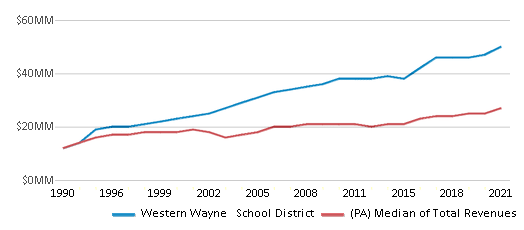
Spending
$46 MM
$38,578 MM
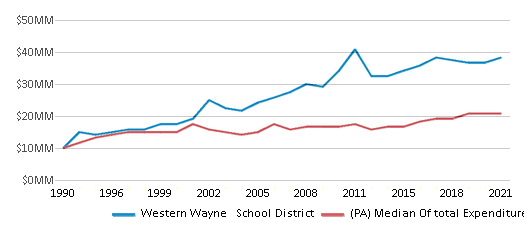
Revenue / Student
$27,924
$23,696
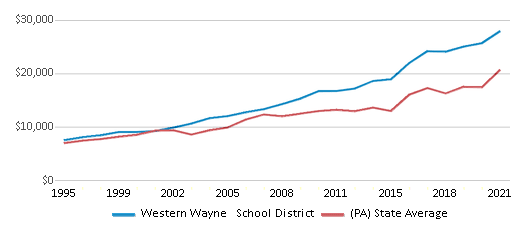
Spending / Student
$25,769
$23,119
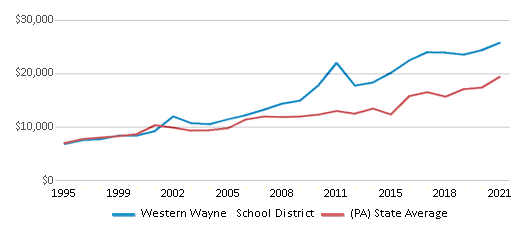
Best Western Wayne School District Public Middle Schools (2025)
School
(Math and Reading Proficiency)
(Math and Reading Proficiency)
Location
Grades
Students
Rank: #11.
Western Wayne Middle School
(Math: 23% | Reading: 63%)
Rank:
Rank:
5/
Bottom 50%10
1970b Easton Turnpike
Lake Ariel, PA 18436
(800) 321-9973
Lake Ariel, PA 18436
(800) 321-9973
Grades: 6-8
| 383 students
Recent Articles

What Is A Charter School?
Explore the world of charter schools in this comprehensive guide. Learn about their history, how they operate, and the pros and cons of this educational innovation. Discover key facts about charter schools, including admission policies, demographics, and funding, as well as what to look for when considering a charter school for your child.

10 Reasons Why High School Sports Benefit Students
Discover the 10 compelling reasons why high school sports are beneficial for students. This comprehensive article explores how athletics enhance academic performance, foster personal growth, and develop crucial life skills. From improved fitness and time management to leadership development and community representation, learn why participating in high school sports can be a game-changer for students' overall success and well-being.

February 05, 2025
Understanding the U.S. Department of Education: Structure, Impact, and EvolutionWe explore how the Department of Education shapes American education, from its cabinet-level leadership to its impact on millions of students, written for general audiences seeking clarity on this vital institution.





